|
|
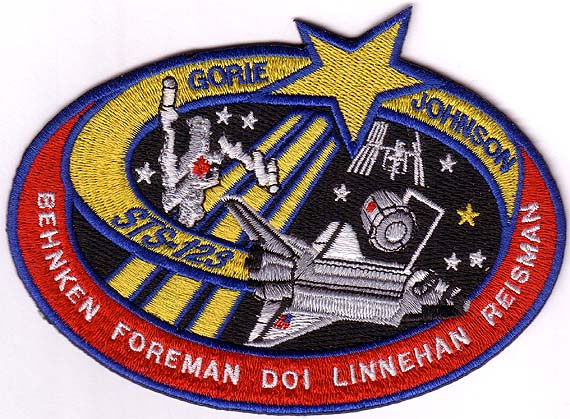
| The Crew |
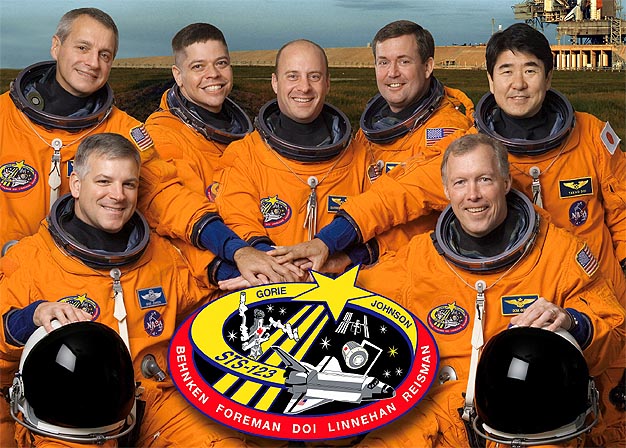
(STS123-S-002 - 26 July 2007) --- These seven astronauts take a break from training to pose for the STS-123 crew portrait. From the right (front row) are astronauts Dominic L. Gorie, commander; and Gregory H. Johnson, pilot. From the left (back row) are astronauts Richard M. Linnehan, Robert L. Behnken, Garrett E. Reisman, Michael J. Foreman and Japan Aerospace Exploration Agency's (JAXA) Takao Doi, all mission specialists. Reisman is scheduled to join Expedition 16 as flight engineer after launching to the International Space Station on mission STS-123.
| STS-123 art |
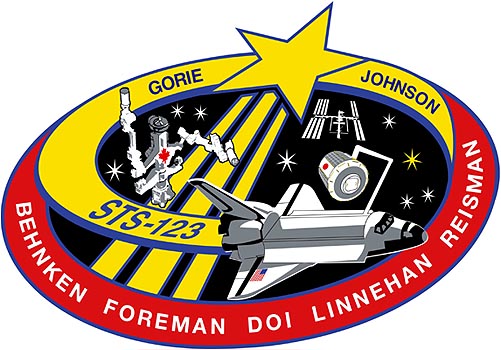
(STS123-S-001 - Oct. 2007) --- STS-123 continues assembly of the International Space Station (ISS). The primary mission objectives include rotating an expedition crew member and installing both the first component of the Japanese Experimental Module (the Experimental Logistics Module - Pressurized Section (ELM-PS)) and the Canadian Special Purpose Dexterous Manipulator (SPDM). In addition, STS-123 will deliver various spare ISS components and leave behind the sensor boom used for inspecting the shuttle's thermal protection system. A follow-on mission to ISS will utilize and then return home with this sensor boom. A total of four spacewalks are planned to accomplish these tasks. The mission will also require the use of both the shuttle and ISS robotic arms. STS-123 will utilize the Station-Shuttle Power Transfer System to extend the docked portion of the mission to eleven days, with a total planned duration of 15 days. The crew patch depicts the space shuttle in orbit with the crew names trailing behind. STS-123's major additions to ISS (the ELM-PS installation with the shuttle robotic arm and the fully constructed SPDM) are both illustrated. The ISS is shown in the configuration that the STS-123 crew will encounter when they arrive.
| STS-123 payload |
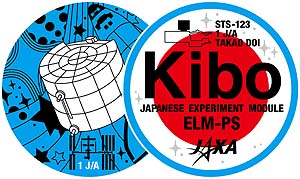
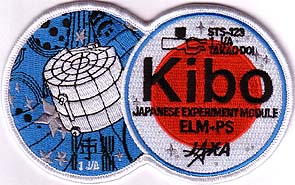
(March 31, 2007 Official JAXA KIBO logo for STS123-1J/A mission).
Kibo is an International Space Station (ISS) module which JAXA operates with the ISS Program. Kiboís functions are similar to the other ISS experiment modules including the Destiny and Columbus laboratories. However, Kibo has been designed with distinctive characteristics. Kibo is a complex facility that consists of several components and possesses every function thatís required to conduct experiment activities in space. Kibo facilitates experiment activities on orbit. However, Kiboís utilization is not limited to on-orbit experiments. JAXA plans on expanding the opportunities for extensive utilization of the space environment, including cultural and educational activities. The six Kibo elements are 1) the Pressurized Module (PM), 2) the Exposed Facility (EF), 3) the Experiment Logistics Module-Pressurized Section (ELM-PS), 4) the Experiment Logistics Module-Exposed Section (ELM-ES), 5) the Remote Manipulator System (JEMRMS) and 6) the Inter-Orbit Communication System (ICS). The ELM-PS, the PM, the JEMRMS and the pressurized part of the ICS were delivered and installed on the ISS during the STS-123 (1J/A) and STS-124 (1J) The rests of the components, the EF and the ELM-ES are scheduled to join the ISS in 2009.